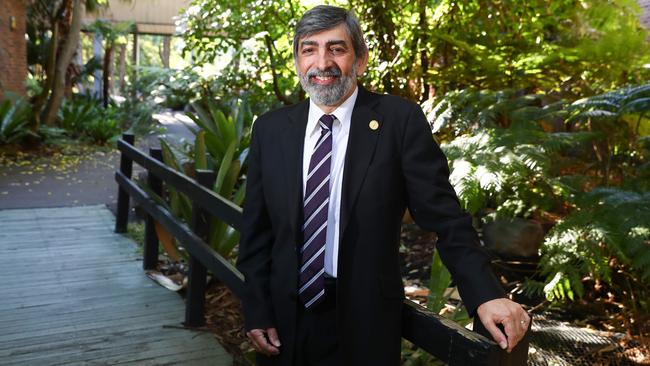ATEM: non-academic staff face challenges with soaring student numbers
Non-academic tertiary staff face challenges coping with soaring student numbers.

University student numbers have increased steadily in the past five years and education as an export industry is continuing to grow, but jobs in non-academic tertiary roles are also on the rise.
Association for Tertiary Education Management executive director Paul Abela says most people fail to realise non-academic staff at universities, TAFEs and in the private college sector outnumber academics, with thousands of people in roles from finance to student support staff and counsellors, as well as in management, information and communications technology, and media.
In 2015, there were 55,000 academics in the sector compared to 68,000 professional staff, and Abela says there are now more than 70,000 professionals. In 1996 there were only 25,000 non-academic staff. And while people automatically think of academics when funding cuts are announced or budgets frozen, Abela says professionals in the sector also fear the worst.
“Often when there’s a debate about cuts, academics say we’re over-bureaucratised and we should get rid of the non-academics, but who’s going to do their (work)?” Abela says. “We need people to do the reporting, we need social workers to work with students, we need counsellors, and academics don’t do that.”
ATEM is an umbrella body representing 70,000 non-academic staff in Australia, New Zealand and Papua New Guinea. It provides training, facilitates conferences and works to ensure the student experience is at the forefront at the tertiary level.
Abela says the recent budget announcement from Education Minister Simon Birmingham, which will see a $2.9 billion cut to university funding, a 7.5 per cent fee hike and students paying loans back earlier — when they begin earning an income of $42,000 instead of the previous $55,000 threshold — would be unpopular, but at least provided certainty.
Since the 2014 federal budget the sector had sweated on the so-called zombie budget measures, which threatened a 20 per cent funding cut but were never passed.
“For the past three years we’ve had no stability in policy,” he says. “Now we do have a little bit of stability. It comes at a price. Of course we’d rather not have any cuts or changes to higher education fees, but from a policy perspective it enables us to make decisions.”
ATEM president and acting University of Southern Queensland vice-chancellor Carl Rallings says it will take time for the budget changes to be understood, including planning for efficiency dividends and how cuts can be absorbed. But he says there is a sense of relief that earlier proposals, including the 20 per cent funding cut and fee deregulation, would not occur.
“When university funding is cut and student fees are increased we know we have to do more with less while at the same time dealing with increased service expectations,” Rallings says.
“This tension is not new for professional staff to deal with and requires ongoing innovation to our services. At the moment I suspect contingency planning is in rapid overdrive, particularly in terms of considering the various funding scenarios and their consequences.”
Abela says dealing with funding changes is nothing new, and ATEM has been coping with them since it was formed 41 years ago.
He says most universities go through structural or cost-cutting changes every time a vice-chancellor moves on, with new candidates wanting to implement their own strategies and reinvent or adjust administration and course delivery. Faculties are renamed, staff moved around and positions cut.
With more than two decades of higher education experience, Abela has seen many of those changes, including the impact of booming student numbers with the introduction of demand-driven places.
“What started as a cottage industry is now a multinational corporation — our universities have international campuses, some have turnovers of $2 billion a year, the industry is worth $20bn a year,” he says. “What ATEM has tried to do is describe administration in the sector as quite unique: it takes something special to understand students and management and community expectations.”
He says an increasing number of jobs have been created in recent years as student numbers have boomed, including in student services and administration, reflecting that some university departments have grown from teaching hundreds of people to thousands.
“The national agenda around admissions has talked about transparency and that directly affects administration staff, and we need to be cognisant of what’s happening,” he says.
Other areas to grow include events and property management, tasked with organising anything from orientation to exams and graduation ceremonies in public halls large enough to cater for the masses — where they were once held in campus buildings.
While there is still a demand for face-to-face lectures and tutorials, there has been massive growth in IT roles on campus to cope with the digitisation of the education sector, and non-academic staff needed to record lectures, create podcasts, facilitate online learning and promote services and university offerings on websites.
“My son works at the University of Technology Sydney, he does podcasts and films lectures,” Abela says. “He graduated from Macquarie University. He works in digital technologies, and he works to make students experiences better.”
As with his son, Abela says ATEM aims to ensure non-academic staff are trained and up to date professionally, to ensure students are prioritised.
Professional development is one of its focuses and essential to ensure the staff in the sector are aware of changes and developments in their fields.
But Abela says students remain at the heart of the tertiary sector, and it all comes back to ensuring they remain engaged, learn effectively and complete their courses.
“Students are paying a lot more money now, they’re demanding a lot more than they were before and as a professional staff we have to provide them with more,” he says. “The student experience gets a good run all the time, but it becomes the lingua franca of all that we do.”


